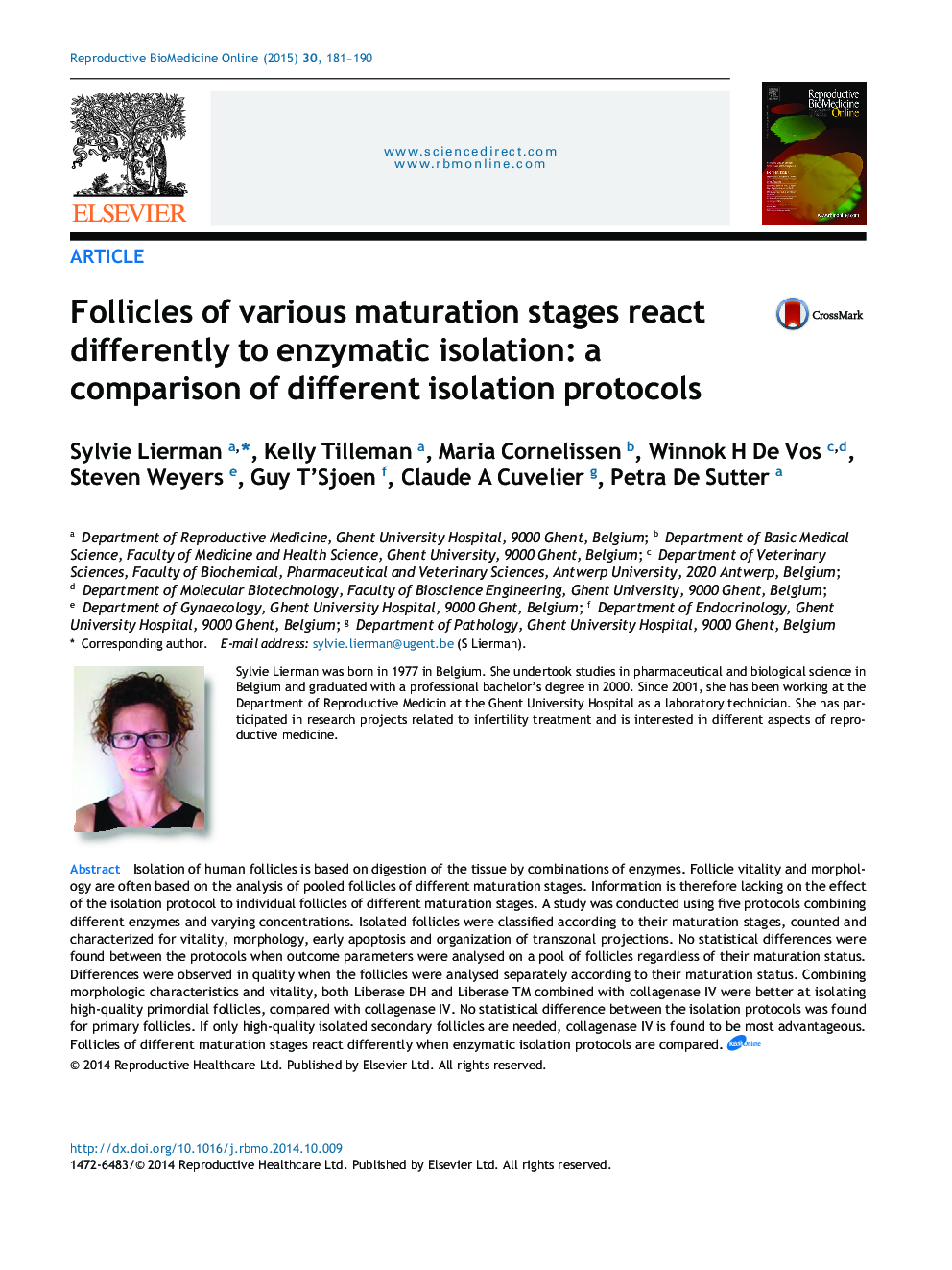| Article ID | Journal | Published Year | Pages | File Type |
|---|---|---|---|---|
| 6188845 | Reproductive BioMedicine Online | 2015 | 10 Pages |
Isolation of human follicles is based on digestion of the tissue by combinations of enzymes. Follicle vitality and morphology are often based on the analysis of pooled follicles of different maturation stages. Information is therefore lacking on the effect of the isolation protocol to individual follicles of different maturation stages. A study was conducted using five protocols combining different enzymes and varying concentrations. Isolated follicles were classified according to their maturation stages, counted and characterized for vitality, morphology, early apoptosis and organization of transzonal projections. No statistical differences were found between the protocols when outcome parameters were analysed on a pool of follicles regardless of their maturation status. Differences were observed in quality when the follicles were analysed separately according to their maturation status. Combining morphologic characteristics and vitality, both Liberase DH and Liberase TM combined with collagenase IV were better at isolating high-quality primordial follicles, compared with collagenase IV. No statistical difference between the isolation protocols was found for primary follicles. If only high-quality isolated secondary follicles are needed, collagenase IV is found to be most advantageous. Follicles of different maturation stages react differently when enzymatic isolation protocols are compared.
